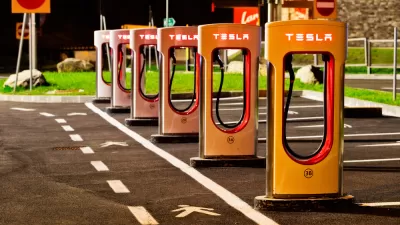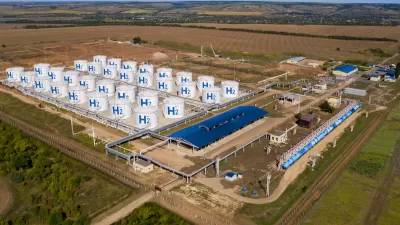The U.S. transportation sector is on track to reduce emissions by 19 percent by the end of the decade, but a new report indicates the public and private sectors could implement policies that would cut emissions by as much as 34 percent.

An analysis from America Is All In states that the U.S. could cut emissions in the transportation sector by up to 34 percent by 2030 if federal, state, and local governments, as well as the private sector, ramp up their current efforts, which are currently on track to reduce emissions by 19 percent by the end of the decade. Dan Zukowski describes the report, whose author notes that “additional action could further reduce transport emissions, bringing the country closer to meeting President Joe Biden’s overall goal of a 50% to 52% reduction in U.S. carbon emissions by 2030.”
The report cites specific steps that can be taken at each level. The federal government should continue its electric vehicle tax credit and purpose increased fuel economy standards. Cities and states can boost their efforts to electrify municipal fleets, reduce vehicle use, and improve EV charging infrastructure. The private sector can “invest in research and development of alternative fuels” that can help decarbonize the electric grid.
“Separately on [April 21], the Federal Highway Administration announced a new program, part of the bipartisan infrastructure law, called the Carbon Reduction Program, making available $6.4 billion in formula funding for states and localities over five years.” The program will fund projects such as bus rapid transit, micromobility, bike infrastructure, and congestion pricing.
FULL STORY: US transportation sector could cut carbon emissions 34% by 2030: analysis

Alabama: Trump Terminates Settlements for Black Communities Harmed By Raw Sewage
Trump deemed the landmark civil rights agreement “illegal DEI and environmental justice policy.”

Planetizen Federal Action Tracker
A weekly monitor of how Trump’s orders and actions are impacting planners and planning in America.

The 120 Year Old Tiny Home Villages That Sheltered San Francisco’s Earthquake Refugees
More than a century ago, San Francisco mobilized to house thousands of residents displaced by the 1906 earthquake. Could their strategy offer a model for the present?

Opinion: California’s SB 79 Would Improve Housing Affordability and Transit Access
A proposed bill would legalize transit-oriented development statewide.

Record Temperatures Prompt Push for Environmental Justice Bills
Nevada legislators are proposing laws that would mandate heat mitigation measures to protect residents from the impacts of extreme heat.

Downtown Pittsburgh Set to Gain 1,300 New Housing Units
Pittsburgh’s office buildings, many of which date back to the early 20th century, are prime candidates for conversion to housing.
Urban Design for Planners 1: Software Tools
This six-course series explores essential urban design concepts using open source software and equips planners with the tools they need to participate fully in the urban design process.
Planning for Universal Design
Learn the tools for implementing Universal Design in planning regulations.
Clanton & Associates, Inc.
Jessamine County Fiscal Court
Institute for Housing and Urban Development Studies (IHS)
City of Grandview
Harvard GSD Executive Education
Toledo-Lucas County Plan Commissions
Salt Lake City
NYU Wagner Graduate School of Public Service





























